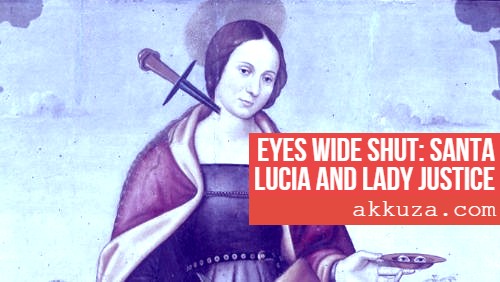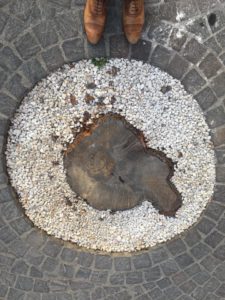In my childhood Santa Lucia meant a visit to an uncle of mine. Wikipedia tells me that the village was named after a 16th Century chapel in the vicinity, which is quite extraordinary given how that particular century kept cropping up as I ‘researched’ the background behind my ideas for this post.
The village is really a 20th century invention – ta’ Mintoff, some would say. An idea of a neatly laid out village snuggled between Luqa and Tarxien underneath the Addolorata Cemetery. In my mind I associate Santa Lucia with Mintoffian street furniture – stone benches, planters and some greenery – and an idea of a centre where one would find a grocer, a butcher and some other amenities put together. The village houses that I remember had their front parapets with some greenery.
Santa Lucia’s streets are colourfully given the name of flowers and trees, From Vjal l-Oleandri to Narcis, Petunja, Vjol, Znuber, Rand, Bruka, Iris, Ibisku to Stefanotis – the idea behind a green modern civic centre was there all right. It was a social experiment that to an extent had worked. Lining the village to the north is the Chinese Garden of Serenity. Described in this way Santa Lucia is definitely an oasis of green idealism far from the destructive obsessions that we are used to today.

Saints, Cemeteries and Blind Justice
Ian Borg’s latest pet project – the one where he claims to have consulted and not heard any response – involves the massacre of a green part of Santa Lucia (and a jogging track). The cemetery has shifted closer within the confines of the village but instead of the souls at the Addolorata (sorrows) we have the sorrowful sight of hundreds of trees being axed in the name of the God of Vehicles and Progress. A vox pop on Maltatoday clearly showed the anxious confusion of the Santa Lucia residents who on the one hand are loath to criticise anything the government of the tattoed undefeated decides to do while on the other they are visibly shaken by the loss of their immediate green surroundings.
There seems to be no justice when opposing such horrible developments. Blind justice seems to peek through her bandages and always, inevitably sides with the developer, the permit seeker and the tree-slayer. Civil society is reduced to holding wakes for the dying after belatedly realising that the justice’s blindness was rigged. Santa Lucia, the village named after a 16th century chapel will be raped in the name of progress – against the inner will of its citizens but to the sound of much acclaim for this government that privileges development above all.
A blindness acquired
Now to a serendipitous series of uncanny coincidences that I came across prompted by the fact that two figures in this modern fable seem to be associated with “blindness” of sorts. Saint Lucy, to begin with. Lucy hailed from nearby Syracuse and was a great devotee of Saint Agatha (one of Malta’s trilogy of patron saints). To cut a long story short, Lucy died a martyr, refusing to renounce her religion. “The Christian tradition states that when the guards came to take her away, they could not move her even when they hitched her to a team of oxen. Bundles of wood were then heaped about her and set on fire, but would not burn. Finally, she met her death by the sword thrust into her throat.” (Wikipedia)
What is absent from Christian tradition – at least not until the 16th century – is any mention of the eye-gouging with which Saint Lucy is associated nowadays.
Which brings me to Lady Justice. The image of Blind Justice is imprinted in our collective minds. The “blindness” is really a blindfoldedJustice and the reason for it is to guarantee impartiality – justice is applied without regard to wealth, power or status (or it should be). Other symbols are normally to be found around images or statues of Justice. Most common of all are the scales of justice – they have been around since depictions by the Egyptians. The Ancient Book of Death depicts a scales in which a heart is balanced by a feather of truth. Justice is often seen carrying a sword that represents the authority of swift and final justice. Sometimes the sword is replaced by a book representing the law.
But back to the blindfold. I was extremely surprised to find out that early depictions of justice never included it. The Greek Themis and Roman Justitia had their eyes uncovered. It is only since the 16th century that justice has been depicted wearing a blindfold. The first known representation of blind Justice is Hans Gieng’s 1543 statue on the Gerechtigkeitsbrunnen (Fountain of Justice) in Berne.
So there you have it. That chapel that gave its name to the 20th century village of Santa Lucia dates from the 16th century. That’s the century when Lucy “lost” her eyes and Justice “gained” her blindfold. In the 21st century, the village of the streets of flowers and trees is losing its greenery. Justice seems to be looking the other way and the only blindness that is apparent is among the citizens who find it hard to criticise the decision-makers… even if their own quality of life is at stake.




